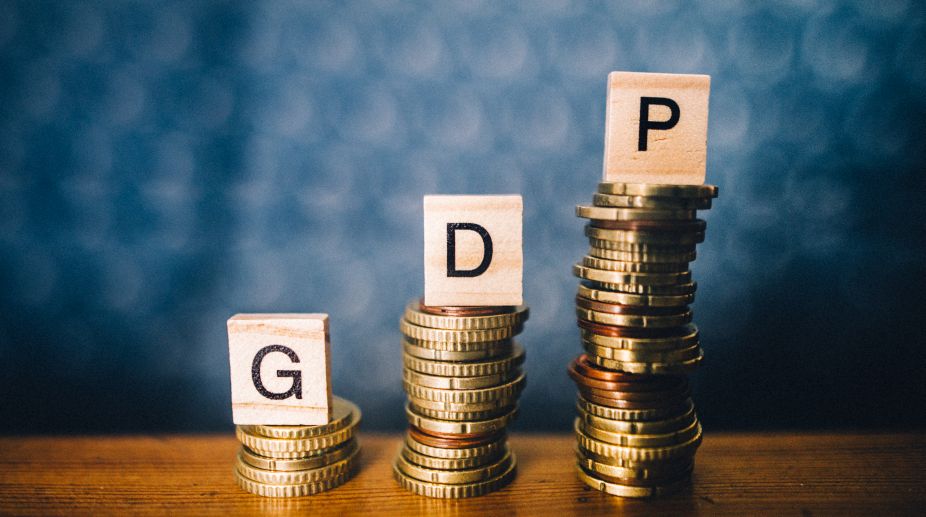India Inc expects the country’s 2017-18 economic growth to be above the 6.5 per cent-mark due to a favourable base effect.
Its reactions came after the estimate of national income for 2017-18, released by the Central Statistics Office (CSO), showed that implementation of GST and subsequent slowdown in the manufacturing sector was expected to drag down the country’s growth rate to 6.5 per cent from 7.1 per cent achieved in 2016-17.
Advertisement
“While this gives the impression of a downturn, in reality, growth has bottomed out in the first quarter of the current year and is now on a recovery. It is possible that this number will be revised up once more data is available for the third and fourth quarter of the year,” said CII Director General Chandrajit Banerjee.
“It is heartening that gross fixed capital formation is on a recovery path, as a turnaround in investments is imperative for a sustained recovery to take hold.”
According to Aditi Nayar, Principal Economist at ICRA: “The advance estimates for the full year have been based on limited data, which would be available for a period of 6-9 months for different sectors.
“Therefore, they are not fully factoring in the expected pickup in growth in the later months of FY2018, related to a favourable base effect and a ‘catch up’ following the subdued growth momentum in H1 FY2018.”
“Accordingly, the advance estimates for GDP and GVA growth appear to be understating economic expansion for FY2018, in our view.”
The data disclosed that sectors like ‘public administration, defence and other services’, ‘Trade, hotels, transport, communication and services related to broadcasting’, ‘electricity, gas, water supply and other utility services’ and ‘financial, real estate and professional services’ registered a growth rate of over 7 per cent.
On the other hand, growth in the ‘agriculture, forestry and fishing’, ‘mining and quarrying’, ‘manufacturing’ and ‘construction’ sectors “is estimated to be 2.1 per cent (from 4.9 per cent), 2.9 per cent (from 1.8 per cent), 4.6 per cent (from 7.9 per cent) and 3.6 per cent (from 1.7 per cent)”, respectively.
The CSO used the first seven-month data of 2017-18 to extrapolate figures for the full fiscal.
“Since these estimates are based on data till November 2017, it has not captured the latest up-tick in the vehicle sales and the improvement in the steel and cement sectors; we expect the final numbers to be revised upwards as and when they happen,” said Arun Thukral, Managing Director and CEO, Axis Securities.
“Given the tepid growth estimates from agriculture, it gives us a feeling that the budget 2018 will have a higher focus on agriculture and rural economy. And as the estimates are missing the RBI expectations, the central bank is likely to pause in its next policy meeting in February 2018.”
Anis Chakravarty, Lead Economist, Deloitte, said the estimate for yearly GDP showed that the growth momentum was expected to improve in the coming quarters in line with expectations and signals from leading indicators.
“As such, for a broad based recovery the rural economy needs to recover and we can expect the upcoming budget to focus on alleviating some of the stress in the rural economy and concentrating on measures to augment the flow of credit in the economy,” said Chakravarty.











